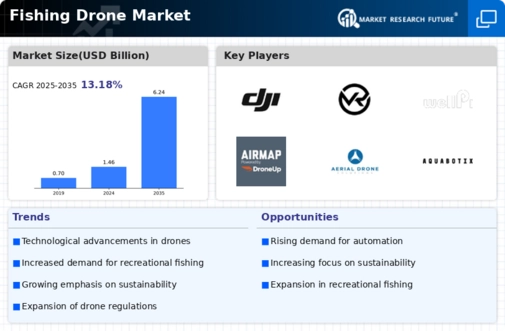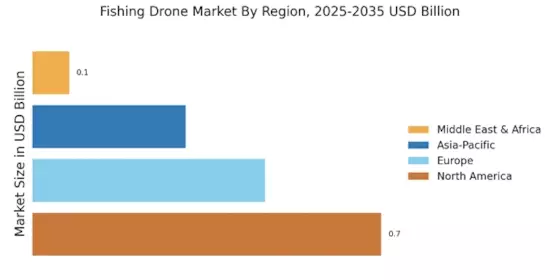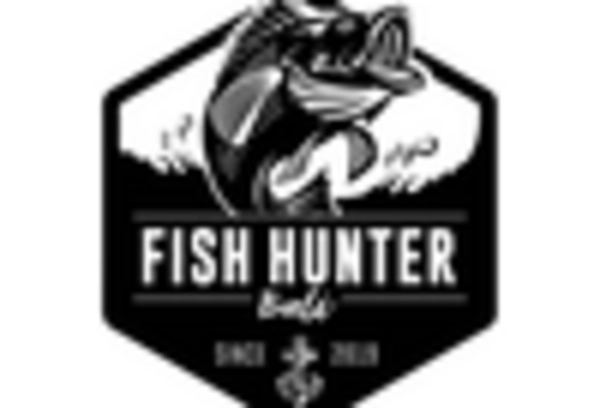Expansion of E-commerce Platforms
The Fishing Drone Market is witnessing a significant expansion of e-commerce platforms, which is transforming the way consumers purchase fishing drones. Online retailing offers convenience and accessibility, allowing consumers to compare products and prices easily. Recent data shows that online sales of fishing equipment, including drones, have increased by 30% in the past year. This trend is likely to continue as more consumers prefer the ease of online shopping. As e-commerce platforms expand their offerings and improve customer service, the Fishing Drone Market is poised for growth, reaching a wider audience and enhancing overall market penetration.
Rising Popularity of Recreational Fishing
The Fishing Drone Market is benefiting from the rising popularity of recreational fishing, which has seen a notable increase in participation rates. As more individuals engage in fishing as a leisure activity, the demand for innovative tools such as fishing drones is on the rise. Recent statistics suggest that the number of recreational fishers has grown by 20% in the last three years. This trend is particularly evident among younger demographics who are more inclined to adopt technology in their fishing practices. Consequently, the Fishing Drone Market is likely to expand as manufacturers cater to this burgeoning consumer segment, offering products that enhance the recreational fishing experience.
Increased Investment in Fishing Technology
The Fishing Drone Market is experiencing increased investment from both private and public sectors, which is fostering innovation and growth. Venture capitalists and government initiatives are channeling funds into research and development of advanced fishing technologies, including drones. This influx of capital is expected to accelerate the introduction of cutting-edge features and functionalities in fishing drones. Market analysis indicates that investments in fishing technology could reach upwards of 500 million dollars by 2026. Such financial backing not only supports the development of new products but also enhances the overall competitiveness of the Fishing Drone Market, positioning it for sustained growth.
Sustainability and Environmental Awareness
The Fishing Drone Market is witnessing a growing emphasis on sustainability and environmental awareness among consumers. As fishing practices come under scrutiny for their ecological impact, drones offer a more sustainable alternative by minimizing overfishing and reducing bycatch. The ability to monitor fish populations and habitats through aerial surveillance allows for more responsible fishing practices. Market data indicates that approximately 60% of consumers are willing to pay a premium for eco-friendly fishing solutions. This shift towards sustainable fishing methods is likely to propel the Fishing Drone Market, as manufacturers increasingly focus on developing drones that align with environmental conservation efforts.
Technological Advancements in Fishing Drones
The Fishing Drone Market is experiencing a surge in technological advancements that enhance operational efficiency and user experience. Innovations such as improved battery life, enhanced GPS capabilities, and advanced sonar technology are becoming increasingly prevalent. These developments allow for more precise fish locating and tracking, which is crucial for both recreational and commercial fishing. According to recent data, the integration of artificial intelligence in fishing drones is projected to increase market growth by approximately 15% over the next five years. As these technologies evolve, they not only improve the functionality of fishing drones but also attract a broader consumer base, thereby driving the Fishing Drone Market forward.

















Leave a Comment